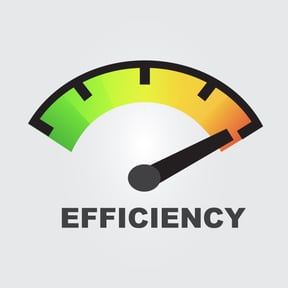Editor's Note: This post was originally published on September 2017. It has been updated for relevance and richness of content on January 2020.
Want to Improve Your Optometry Practice Workflow? Ask These 5 Questions
In an eyecare practice, you're pushed to constantly look at ways to do tasks more accurately and efficiently than before. In the manufacturing industry, the assembly line made it possible to produce quality work in less time.
Now, the eyecare industry is going through the same transformation with an all-inclusive practice management and EHR solution that helps streamline the office workflow. But, how do you know if your office workflow is in need of a tune-up?
Below are five questions you should ask to see if you can improve your office workflow.
5 Questions To Ask To Improve Your Office Workflow
1. How much time is spent on the phone scheduling appointments?
Your front office staff is the welcoming committee at your optometric practice. When a patient walks through your practice doors, they want to be greeted like family. Unfortunately, when patients only have the opportunity to schedule appointments over the phone, you’re taking away your staff’s ability to effectively care for the needs of the patients in your office. In fact, scheduling and confirming appointments can take up to 10 hours per week.
If your front office is spending too much time on the phone scheduling appointments, give your patients access to a patient portal where they can schedule appointments on their own time through a web scheduler. This will free up your front office to put more focus on meeting the needs of the patients in your practice.
2. Can the technician take on more non-exam work?
As an OD, your mission is to provide exceptional care to as many patients as you can. However, many of the routine responsibilities in a patient’s exam are taking up more of your time and keeping you from seeing multiple patients each hour. The good news is that you’re not required to handle some of the routine tasks that are taking you away from your patients.
If your technician has the capacity to take on more responsibilities around the office, consider offloading some non-exam work onto them. Doing so will decrease any awkward handoffs and will enable you to see more patients throughout the day.
3. Does my EHR come with all the tools to keep focus?
Piecing together all of the equipment required to run an effective optometric practice is a lot of work. As these solutions grow with the needs of your patients, your practice, and the eye care industry, maintenance and software linking becomes too complex to manage.
Consider consolidating your optometry software to decease complexities. Today, cloud-based EHR solutions can come embedded with all the tools you need to run an effective practice and care for your patients without having to hire IT staff to maintain connections and updates, or switching between multiple software applications.
4. Is your staff manually entering frame information?
Manually entering data is time-consuming and error-prone. When it’s time to move your patient out of the exam room and into the showroom, you want to make the process as smooth as possible while still giving your optician accurate information so they can help your patient select the best frame and lenses for their vision and lifestyle needs.
Instead of manually entering prescription data, the prescription data should be auto-populated for the optician to use in the Rx order form.
5. How long does it take for you to receive your claim reimbursements?
Insurance claim reimbursements can be very profitable for your optometric practice if your billing department has a good handle on the claims management process. However, if it’s taking four to six weeks to receive reimbursements, then you may need to take a look at what’s causing the delays in payment.
To cut down on time it takes to receive your claim reimbursements, your practice management and EHR solution should include a clearinghouse integration with the ability to generate and validate codes at the exam level and let you quickly file and monitor your claims.
To see an efficient EHR & PM in action, watch Dr. Nafey go through an exam in under 17 minutes.

